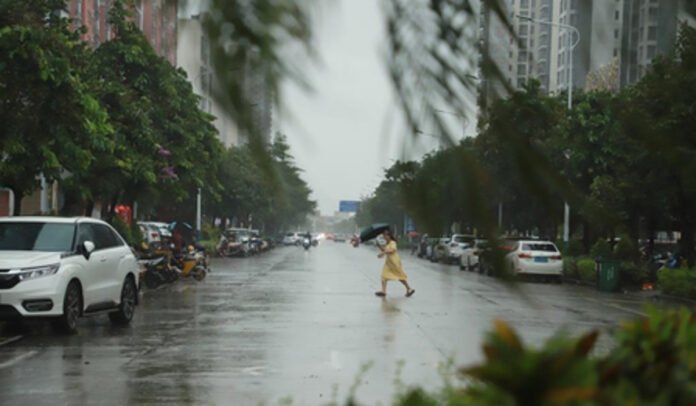In a powerful display of nature’s force, Typhoon Matmo struck southern China on Sunday, prompting the evacuation of more than three lakh people across Guangdong and Hainan provinces. The storm arrived with wind speeds touching 151 kilometres per hour as it made landfall in Xuwen, Guangdong, unleashing torrential rains and fierce gusts that battered coastal regions.
Authorities confirmed that over 1.5 lakh residents were moved to safety in Guangdong, while nearly two lakh more were evacuated in Hainan. Emergency shelters were prepared, and relief teams mobilised to support displaced communities. The storm was accompanied by heavy rainfall ranging from 100 millimetres to nearly 250 millimetres, creating fears of flash floods and landslides in vulnerable areas.
China’s meteorological department had issued a red alert, the highest warning level, ahead of the storm’s arrival. Officials suspended ferry services, grounded flights and halted public transport in affected zones. Popular tourist sites and beaches were also closed as precautionary measures. In Hainan, ferry terminals were shut, stranding thousands of travellers, while airports cancelled dozens of flights.
The storm’s timing coincided with the National Day holiday travel rush, one of the busiest seasons in China. Millions of people had been on the move to celebrate the week-long holiday, leading to widespread disruptions in both domestic and international travel. Hotels and tourist operators across Hainan and coastal Guangdong reported mass cancellations as holidaymakers scrambled to rearrange their plans.
Rescue and emergency services were placed on high alert. Teams equipped with inflatable boats, generators and medical supplies were stationed across high-risk zones to assist communities in case of flooding. Local authorities deployed additional police and volunteers to manage traffic diversions and assist in evacuation drives.
Meteorologists tracking Matmo said that after landfall in Guangdong, the typhoon was expected to weaken gradually while moving inland toward Guangxi. However, they warned that persistent heavy rainfall could continue to threaten low-lying areas, potentially overflowing rivers and reservoirs. Precautionary measures, including the release of excess water from dams, were under consideration to avoid breaches.
Officials emphasised the importance of timely evacuation, noting that early warnings had enabled many residents to move before the storm struck. Villages in coastal belts were completely evacuated, with residents temporarily shifted to government schools and community halls. Food packets, blankets and basic supplies were distributed to evacuees, and emergency kitchens were set up in relief camps.
Economic losses are expected to be significant, with agricultural fields, fisheries and coastal infrastructure among the most affected. Farmers in Hainan reported damage to paddy fields and fruit orchards, while fishing boats were brought ashore in advance of the storm. Local governments have begun preliminary assessments, though a full picture of losses will emerge only after waters recede.
Matmo is the latest in a series of strong typhoons to hit East and Southeast Asia this year, underscoring growing concerns over climate change and extreme weather events. Experts warn that warming oceans and shifting weather patterns are likely to increase the intensity of such storms in the future.
As the typhoon weakened slightly by late evening, authorities continued to urge residents to remain cautious and avoid unnecessary travel. The focus remained on relief, rehabilitation and restoring essential services once conditions improve.



























